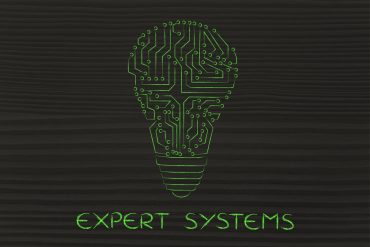
As we continue the COVID-19 vaccination effort across the globe and plan for future pandemics, we need to ensure that advanced technologies for streaming analytics are incorporated into the management of the distribution network.
The United Kingdom, Bahrain, Canada, Mexico, and the United States became some of the first countries to approve the authorization and distribution of vaccinations to combat the COVID-19 pandemic in December of 2020. Soon after, leaders were tasked with the immense challenge of quickly building a global and nationwide logistics network and standing up millions of vaccination locations. The use of in-memory computing with real-time digital twins has the potential to help.
Vaccination rollout operations did not go without missteps that slowed down the life-saving effort. For example, in the U.S., there were 20 million missing COVID-19 vaccine doses, reports of thousands of unused doses, canceled vaccinations due to shortages, and a series of other issues. Additionally, while the U.K. was the first in the world to approve a vaccine for distribution, its efforts were stalled in March of 2021 due to major shortages in supply.
Tracking’s role is critical
Now it’s clear that global governments and leaders need more effective and timely tracking of vaccine distribution and delivery to complete this effort, roll out COVID-19 variant boosters, and prepare for future pandemics. Ensuring that vaccine distribution and delivery run smoothly requires analyzing large quantities of real-time information about all aspects of the distribution network and then quickly responding to emerging issues. This information is consumed by governments, health organizations, and the private sector, all working together to implement vaccine distribution. Here are some key questions that this real-time information can answer:
- Where are all the vaccine shipments right now in North America?
- Where is the largest shortfall of vaccines, and which specific vaccination centers have the most pressing needs?
- How many qualified medical personnel are available at each center, and which centers need additional personnel to handle current workloads?
- Which centers have the highest wait times and have neighboring centers with extra capacity to which people could be redirected?
- Is vaccine distribution underserving certain population groups and in need of reprioritization?
Given the unique and highly dynamic nature of this challenge, vaccine distribution teams need real-time information processing technologies that can continuously digest incoming messages from millions of data sources: vaccination centers, warehouses, fleet vehicles, and other locations in the distribution network. These technologies need to be able to create a dynamic, comprehensive picture of the distribution system and continuously highlight the highest priority issues so that management personnel can maintain situational awareness and respond to critical challenges.
The role of a real-time digital twin
Because it can track, analyze, and aggregate large volumes of fast-changing data in real-time, in-memory computing technology is well suited to meeting these requirements. Its capabilities can give leaders a complete visual picture of how a logistics network for vaccine distribution is performing. By creating a software component called a “real-time digital twin” for each reporting source within the distribution network, in-memory computing software can process incoming messages within milliseconds and maintain key information about the current state of each source. It can then aggregate this information and, within seconds, visualize the results in charts, tables, and maps.
Consider a real-time digital twin for a vaccination center, which holds dynamic information about the status of the center that is updated as messages are received from personnel. For example, it can track the real-time supply of vaccines, current demand (number of waiting recipients), the number of people vaccinated the availability of trained personnel to perform injections, and much more. It also can hold relevant background information, such as the center’s location, capacity, and nearby medical facilities. As it receives periodic messages from personnel, the real-time digital twin immediately updates the center’s status, analyzes evolving conditions, and looks for problems (such as an impending shortfall in vaccines).
The in-memory computing system continuously aggregates status information and priorities for managers, enabling them to visualize in seconds where problems are emerging and where action needs to be taken. For example, using continuous queries of real-time digital twins, it can show on a map which vaccination centers have the largest predicted vaccine shortfalls in the next hour based on trends that have been developing throughout the day. Personnel can then direct supplies to these centers to avoid turning away recipients.
The power of real-time digital twins also lies in their ability to simplify application development. By allowing application developers to focus only on the algorithms and state information needed to process incoming messages, code is both easy to write and easy to change as needs evolve. The in-memory computing system handles the details of data orchestration, message processing, aggregation of results, and visualization. It typically runs as a cloud service that can transparently scale to handle millions of data sources.
As we continue the COVID-19 vaccination effort across the globe and plan for future pandemics, we need to ensure that advanced technologies for streaming analytics are incorporated into the management of the distribution network. Inefficiencies in distribution can translate into thousands of lives lost and a lengthy economic recovery. In-memory computing with real-time digital twins offers an important new tool for tracking vaccine distribution and quickly surfacing problems so that personnel can quickly address them. This technology can play a key role both now and when the next pandemic inevitably arrives.




























